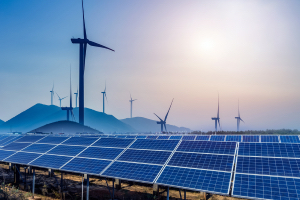Energy Efficiency
Virtual power plants use advanced software to create a system that connects hundreds of power-producing renewable resources
Virtual power plants use advanced software to create a system that connects hundreds of power-producing renewable resources
Virtual power plants use advanced software to create a system that connects hundreds of power-producing renewable resources, giving homes and business clean, consistent energy
Virtual power plants involve gathering power from multiple plants and distributed energy resources to provide power. Using innovative technology and the ability to combine power from a variety of renewable sources may revolutionize how people get power in the coming years
It’s already taking off at an unprecedented rate. Distributed energy resources (DER) involve power sources such as rooftop solar and on-site batteries that can store electricity. A report from industry experts Wood Mackenzie projects that DER will produce 400 GW in the United States by 2025.
The use of virtual power plants (VPP) and DER is moving away from non-residential use only. That use made up almost all DER in 2015. By 2025, it will make up less than half as more homes turn to this alternative form of energy.
Power grids have always depended on a centralized power plant to provide energy for millions, typically powered by coal or natural gas. A VPP completely changes that approach. Rather than using one giant plant, a VPP draws energy from hundreds of independent resources in a way that provides consistent power 24/7 to customers.
A digital network connects these DER from all parts of the country. They include clean power from solar, wind and other renewable energy resources.
A VPP smooths out issues involved in using renewable resources. Right now, renewables used in places such as California and Texas can cause issues. For example, huge spikes in the use of fossil fuel-powered energy happens when the sun sets and solar is not available.
By storing energy from many different sources, a VPP can keep supply consistent without sudden spikes or an oversupply of energy that can lead to technical issues in the power grid.
The emergence of DER has driven creation of virtual power plants. DER refers to the multiple energy resources drawn upon to create a VPP system.
For example, in a residential area, a VPP system connects power from rooftop solar panels, in-home batteries and other renewable energy resources. That creates a large pool of energy resources that a VPP can draw upon. At the very least, it can provide power if the main grid system goes down.
VPP and DER can radically change energy production and distribution. It’s a needed change. With more people moving into cities and climate change making it apparent that we need to move away from fossil fuels, a shift has begun toward finding energy resource systems that don’t create greenhouse gases but also are reliable.
An example of a VPP at work comes from Europe. Next Kraftwerk, based in Germany, uses VPP software to create a network of power-producing renewable resources that includes wind, solar and biogas. “The resulting tight-knit network benefits everyone involved and the power grid as a whole,” the company reports.
They project that all of Germany’s power needs will be met by renewables by 2050.
Experts have many issues to work out with VPP, including whether utilities will control these systems. But the future looks bright for VPP technology that uses DER to provide clean, consistent energy to businesses and homes.